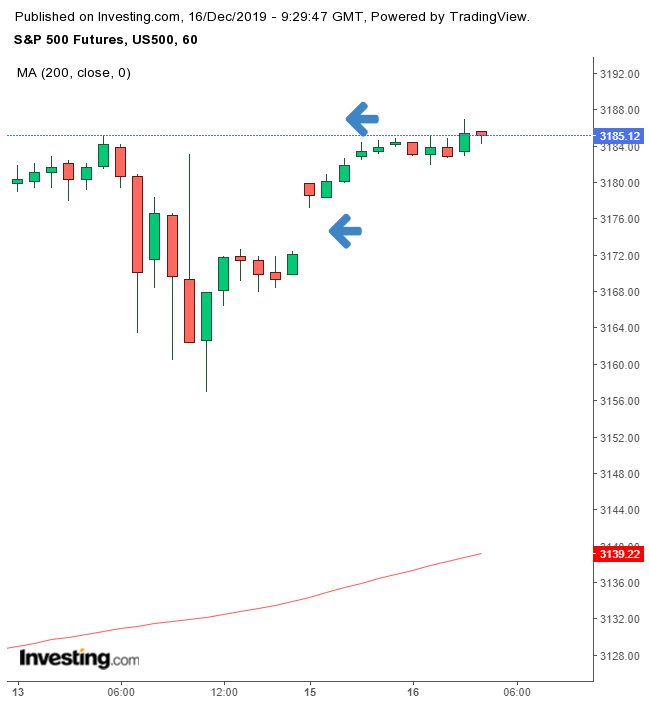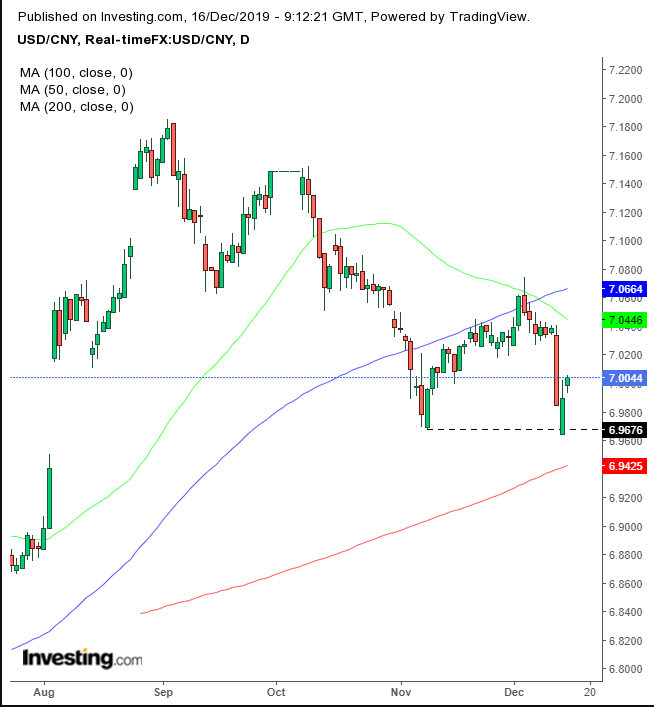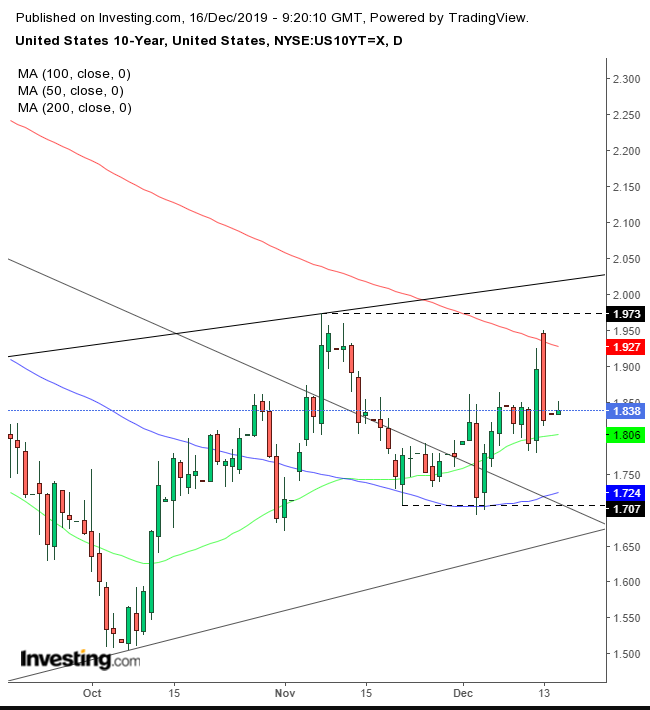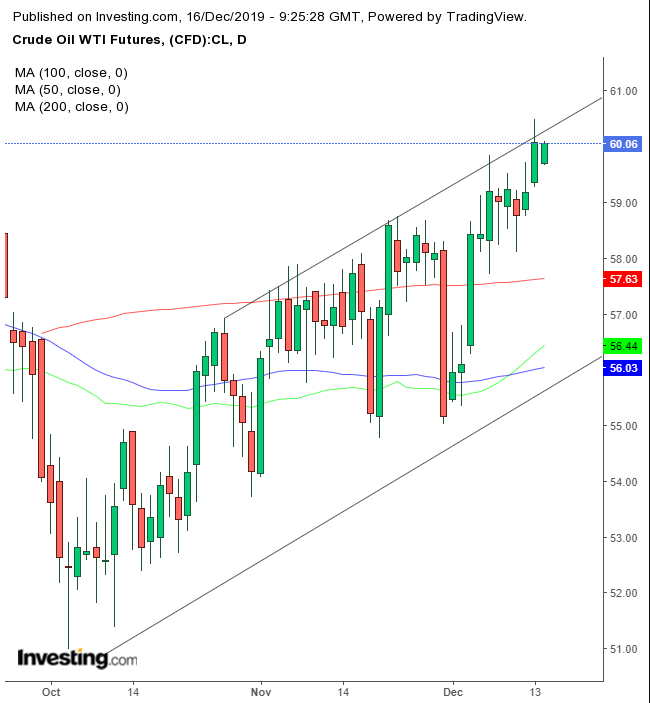Key Events
U.S. futures contracts, including for the Dow Jones, S&P 500 and NASDAQ, as well as European shares opened higher to start the week, buoyed by the expected removal of two of the biggest market risks in recent years: Brexit uncertainties and a potential escalation of trade war hostilities between the world's two largest economies. Though Asian markets were mixed this morning, yields rose while gold and the yen retreated.
Global Financial Affairs

U.S. S&P 500 futures extended their early advance to a new all-time high, building on last week’s S&P 500 rally during the latter part of the week, which saw the benchmark close at its own new all-time high. Equities were boosted on Friday after the Trump administration said it had agreed in principle to reduce import taxes on China, and not levy additional tariffs that were scheduled to go into effect on Dec. 15. In return, China would buy more U.S. agricultural goods.
During a briefing on Friday, trade representative Robert Lighthizer appeared to be working hard to convince reporters that this time was for real, bringing with him an 86-page printout as evidence of at least a phase 1 resolution. Though he characterized the agreement as “totally done” on CBS, Lighthizer added, almost under his breath, that there will be a transition period during which each side can work out the details.
It's important to note, however, that China has a checkered past when it comes to following through on pledges to increase purchases of American agricultural products. As such, investors may want to see for themselves just how quickly President Donald Trump’s promises to roll back half of a September tariff hike will take effect.
Miners and financial stocks pushed the STOXX Europe 600 Index to its fourth straight day of gains. Nonetheless, in Asia, traders appeared more skeptical, as if their proximity to China provided greater insight into the situation, which the West hasn’t yet realized.
Australia’s ASX 200 outperformed, (+1.63%), as a trade deal bodes very well for the country whose biggest two-way trading partner is China. The Shanghai Composite advanced as well, (+0.56). Hong Kong’s Hang Seng was deepest in the red , (-0.65%).
The Chinese yuan climbed, albeit temporarily, after industrial output and retail sales figures beat expectations. The two releases, on top of a trade deal bodes well for the Asian nation's economy. However, the renminbi ultimately fell for the second day.

Technically, while the USD/CNY appeared to have found support above the early November lows and the 200 DMA, the damage may have already been done after the USD/CNY registered a new low in the downtrend since the early September high.

After Thursday's short-lived high and drastically lower close, Treasury yields, including for the U.S. 10-year note, are little changed. Technically, rates found resistance by the top of a range in which they have been trapped since crossing the long-term downtrend line since November 2018. The 200 DMA’s rush to aid the range top reveals its importance as a resistance.
Oil is hovering at a three month high, boosted by the trade deal. However, prices are little changed. Savvy commodity investors may want to see evidence this agreement has teeth.

Technically, the price is stuck at the top of a falling channel, whose presumed increased supply is likely to push oil down, back toward the channel bottom.
Up Ahead
Market Moves
Stocks
- Futures on the S&P 500 Index gained 0.3%.
- The Stoxx Europe 600 Index rose 0.7%.
- The MSCI Asia Pacific Index dipped 0.1%.
- The MSCI Emerging Markets Index was little changed.
Currencies
Bonds
- The yield on 10-year Treasuries rose two basis points to 1.84%.
- The yield on 2-year Treasuries jumped two basis points to 1.63%.
- Germany’s 10-year yield increased one basis point to -0.28%.
- Britain’s 10-year yield climbed less than one basis point to 0.795%.
- Japan’s 10-year yield gained one basis point to -0.011%.
